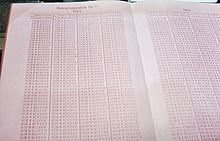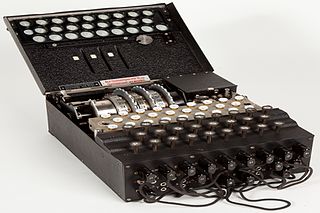
The Enigma machine is a cipher device developed and used in the early- to mid-20th century to protect commercial, diplomatic, and military communication. It was employed extensively by Nazi Germany during World War II, in all branches of the German military. The Enigma machine was considered so secure that it was used to encipher the most top-secret messages.

Signals intelligence (SIGINT) is the act and field of intelligence-gathering by interception of signals, whether communications between people or from electronic signals not directly used in communication. As classified and sensitive information is usually encrypted, signals intelligence may necessarily involve cryptanalysis. Traffic analysis—the study of who is signaling to whom and in what quantity—is also used to integrate information, and it may complement cryptanalysis.

Ultra was the designation adopted by British military intelligence in June 1941 for wartime signals intelligence obtained by breaking high-level encrypted enemy radio and teleprinter communications at the Government Code and Cypher School (GC&CS) at Bletchley Park. Ultra eventually became the standard designation among the western Allies for all such intelligence. The name arose because the intelligence obtained was considered more important than that designated by the highest British security classification then used and so was regarded as being Ultra Secret. Several other cryptonyms had been used for such intelligence.

German submarine U-110 was a Type IXB U-boat of Nazi Germany's Kriegsmarine that operated during World War II. She was captured by the Royal Navy on 9 May 1941 and provided a number of secret cipher documents to the British. U-110's capture, later given the code name "Operation Primrose", was one of the biggest secrets of the war, remaining so for seven months. President Franklin D. Roosevelt was only told of the capture by Winston Churchill in January 1942.
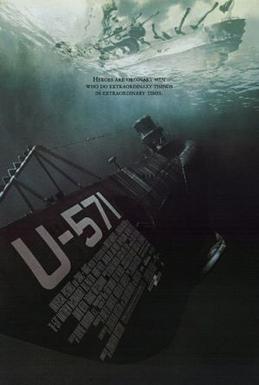
U-571 is a 2000 submarine film directed by Jonathan Mostow from a screenplay he co-wrote with Sam Montgomery and David Ayer. The film stars Matthew McConaughey, Bill Paxton, Harvey Keitel, Jon Bon Jovi, Jake Weber and Matthew Settle. The film follows a World War II German submarine boarded by American submariners to capture her Enigma cipher machine.
The known-plaintext attack (KPA) is an attack model for cryptanalysis where the attacker has access to both the plaintext and its encrypted version (ciphertext). These can be used to reveal secret keys and code books. The term "crib" originated at Bletchley Park, the British World War II decryption operation, where it was defined as:
A plain language passage of any length, usually obtained by solving one or more cipher or code messages, and occurring or believed likely to occur in a different cipher or code message, which it may provide a means of solving.

Cryptanalysis of the Enigma ciphering system enabled the western Allies in World War II to read substantial amounts of Morse-coded radio communications of the Axis powers that had been enciphered using Enigma machines. This yielded military intelligence which, along with that from other decrypted Axis radio and teleprinter transmissions, was given the codename Ultra.

Enigma is a 2001 espionage thriller film directed by Michael Apted from a screenplay by Tom Stoppard. The script was adapted from the 1995 novel Enigma by Robert Harris, about the Enigma codebreakers of Bletchley Park in the Second World War.

High-frequency direction finding, usually known by its abbreviation HF/DF or nickname huff-duff, is a type of radio direction finder (RDF) introduced in World War II. High frequency (HF) refers to a radio band that can effectively communicate over long distances; for example, between U-boats and their land-based headquarters. HF/DF was primarily used to catch enemy radios while they transmitted, although it was also used to locate friendly aircraft as a navigation aid. The basic technique remains in use as one of the fundamental disciplines of signals intelligence, although typically incorporated into a larger suite of radio systems and radars instead of being a stand-alone system.
The B-Dienst, also called xB-Dienst, X-B-Dienst and χB-Dienst, was a Department of the German Naval Intelligence Service of the OKM, that dealt with the interception and recording, decoding and analysis of the enemy, in particular British radio communications before and during World War II. B-Dienst worked on cryptanalysis and deciphering (decrypting) of enemy and neutral states' message traffic and security control of Kriegsmarine key processes and machinery.
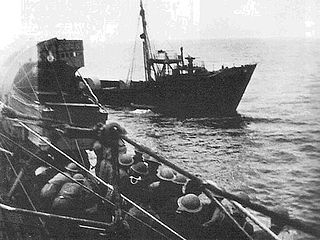
Lauenburg was a German weather ship used in the early years of the Second World War to provide weather reports for German shipping, particularly German U-boats. After the German use of such vessels had been identified as a weakness that could be exploited to break the Enigma code, Lauenburg was captured and sunk on 28 June 1941. The Royal Navy acquired important German code books and parts of an Enigma machine.
Before the development of radar and other electronics techniques, signals intelligence (SIGINT) and communications intelligence (COMINT) were essentially synonymous. Sir Francis Walsingham ran a postal interception bureau with some cryptanalytic capability during the reign of Elizabeth I, but the technology was only slightly less advanced than men with shotguns, during World War I, who jammed pigeon post communications and intercepted the messages carried.

OB 318 was a North Atlantic convoy which ran during the Battle of the Atlantic in World War II. During Operation Primrose Royal Navy convoy escorts HMS Bulldog, Broadway and Aubrietia captured U-110 with an intact Enigma machine and a wealth of signals intelligence, which led to the Allied breakthrough into cracking the German naval Enigma code.
Kurier was a burst transmission system for U-boat communications that was first sea trialed by the Kriegsmarine in 1943 and subsequently fitted to the Type XXI submarine. Having learned of the success of the UK's "huff-duff" systems in rapidly locating radio transmissions, Kurier was developed to dramatically reduce message transmission times from a typical 20 seconds to about 250 ms, and never longer than 450 ms. Due to the deteriorating position of Germany by that time, Kurier never became operationally effective before the war ended.
The Short Weather Cipher, also known as the weather short signal book, was a cipher, presented as a codebook, that was used by the radio telegraphists aboard U-boats of the German Navy (Kriegsmarine) during World War II. It was used to condense weather reports into a short 7-letter message, which was enciphered by using the naval Enigma and transmitted by radiomen to intercept stations on shore, where it was deciphered by Enigma and the 7-letter weather report was reconstructed.
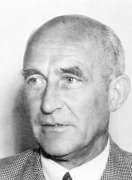
Wilhelm Tranow was a German cryptanalyst, who before and during World War II worked in the monitoring service of the German Navy and was responsible for breaking a number of encrypted radio communication systems, particularly the Naval Cypher, which was used by the British Admiralty for encrypting operational signals and the Naval Code for encrypting administrative signals. Tranow was considered one of the most important cryptanalysts of B-service. He was described as being experienced and energetic. Little was known about his personal life, when and where he was born, or where he died.
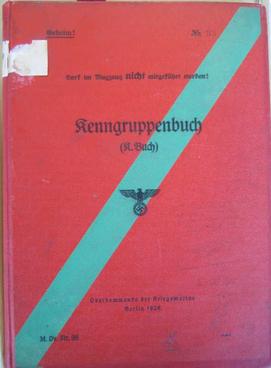
The Discriminant Book shortened to K-Book (K. Buch), and also known as the indicator group book or identification group book was a secret distribution list in booklet form, which listed trigraphs in random order. The Kenngruppenbuch was introduced in May 1937, and used by the Kriegsmarine during World War II as part of the Naval Enigma message encipherment procedure, to ensure secret and confidential communication between Karl Dönitz, Commander of Submarines (BdU) in the Atlantic and in the Mediterranean operating German submarines. The Kenngruppenbuch was used in the generation of the Enigma message Key that was transmitted within the message Indicator. The Kenngruppenbuch was used from 5 October 1941, for the Enigma Model M3, and from 1 February 1942 exclusively for the Enigma M4. It must not be confused with the Kenngruppenheft which was used with the Short Signal Book.

Erhard Maertens or Eberhard Maertens was a German Vizeadmiral of the Kriegsmarine during World War II. From 16 June 1941 to 5 May 1943, he was Chief of Office of Naval Intelligence, Naval War Command in the Oberkommando der Marine. Maertens was known for underestimating British intelligence, and specifically, overrating the security of the Naval Enigma cipher machine. In 1941, he held a naval enquiry into the strength of Naval Enigma security after the capture of U-boat U-570, and attributed all the suspicious losses in U-boats at the time to the British Huff-Duff. In the second enquiry, ordered by the Commander-in-Chief of the Navy Karl Dönitz, in May 1943, he investigated a number of areas, which exculpated Enigma security in the end, for the second time, incorrectly blaming British 9.7 centimetre centimetric radar for the massive losses in U-boats by mid 1943.

Ludwig Stummel was a German career signals officer with the rank of Konteradmiral, who had a glass eye and a limp and who was in effect, the Chief of Staff of the Naval Warfare department, Naval Communications (4/SKL) of the Kriegsmarine. Stummel was most notable for being the person responsible for the cryptographical security of the Enigma cipher machine and Key M infrastructure security, during World War II. Stummel was replaced at the Kriegsmarine Naval War Command on the 16–17 August 1944 by Fritz Krauss, after becoming ill. Stummel was a fervent Catholic. His faith gave him a moral compass during the latter years of the war. Initially a supporter of Nazis, he became doubtful as the war progressed. He was released from the Kriegsmarine in February 1945.

The Enigma-M4 is a rotor key machine that was used for encrypted communication by the German Kriegsmarine during World War II from October 1941.
